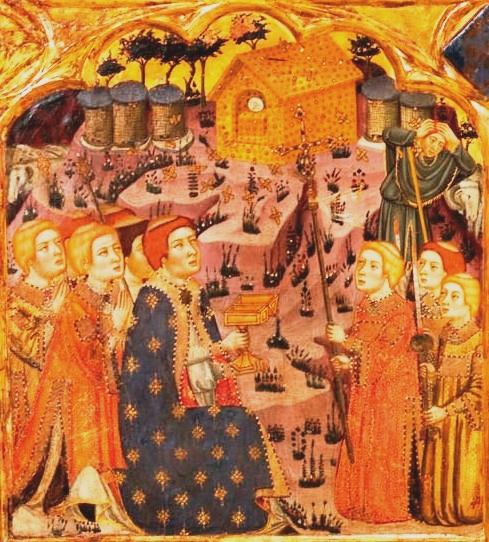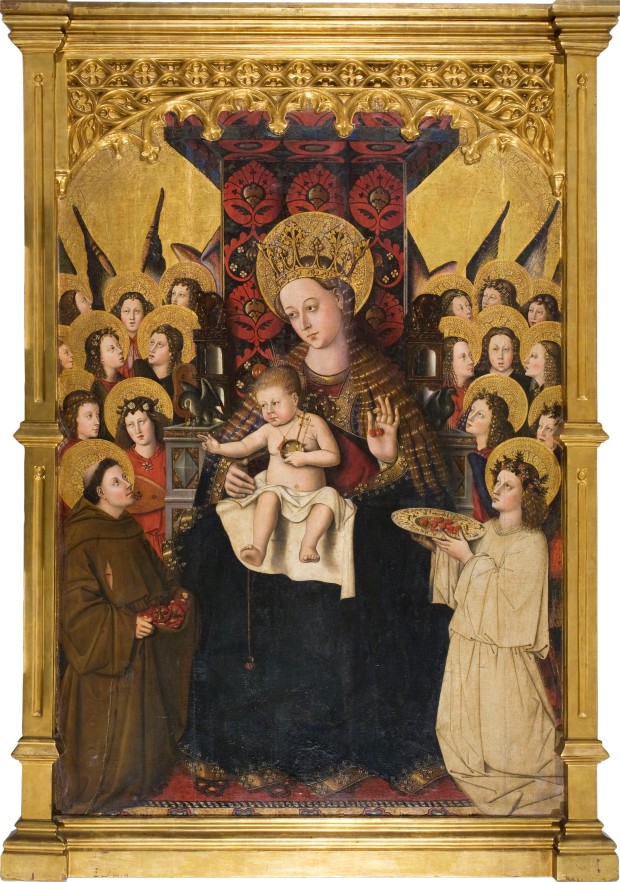Faced with illnesses, spells, and many other dangers that threatened their survival, the men and women from the middle ages often placed their hopes for healing or protection in the power, so they believed, that emanated from certain objects. Walking through the Gothic art collection of the museum, which has a major thematic wealth, we can get a very precise idea of this.
One of the compartments of the biggest Gothic altarpiece of the parish church of Granollers (Vallès Oriental, Catalonia), the table of the Princess Eudoxia in front of the tomb of Saint Stephen, exemplifies perfectly the belief of the period of the healing power of the relics. According to tradition, Eudoxia, who had been possessed by the devil, was cured thanks to the action of the body of Saint Stephen. The painting, however, doesn’t limit itself to presenting the exorcism of the princess, evident due to the dragon fleeing from the mouth. Apart from this, it shows all kinds of details of the devotional practices belonging to the period by means of votive offerings that hang above the holy tomb, as well as the crippled character who has come on a pilgrimage (and wearing a series of insignia from the pilgrimage, amongst which those of the main centres of the time: the keys of Saint Peter of Rome, and the shell of Santiago de Compostela).
Due to their power, the relics were sometimes subject to malpractice aimed at achieving some illegitimate purpose. This is illustrated, for example, in the compartment of the Miracle of the bees contained in the predella of the Maria altarpiece of the monastery of Sixena (Osca). According to the account of the events, a farmer manages to get a consecrated host and places it within his beehive in the hope of improving the production of honey. Faced with the dishonest behaviour of the farmer, however, the insects, aware that the host was the body of Christ, constructed a wax sanctuary to praise him. As in so many other cases, a malpractice ends up provoking the manifestation of divine power.

Jaume Serra. Miracle of the bees, circa 1367-1381.
The relics, however, were not the only means of protection invoked in the Middle Ages, but they lived with all kinds of charms, to which properties were attributed similar to those of the holy objects. In this sense, it seems eloquent, that King John I the Hunter at the same time as he requested relics from the Holy Land, strived to get objects such as a unicorn horn, of which all kinds of virtues had been explained, such as the capacity to protect from poisoning.
Another charm of well-known magic properties was red coral, indicated, among others in the case of blood diseases or as a means of protection during births, one of the main causes of female death of the time. Medieval art echoes the custom of placing a red coral necklace around the neck of infants. In the collection of the museum there is a well-worn one, for example, on the child Jesus of the Virgin of the “Consellers” or the altarpiece Virgin of the Porziuncola, of Albocàsser (Castelló).
Do you know other works of art with similar representations?Àrea d’Art Medieval










